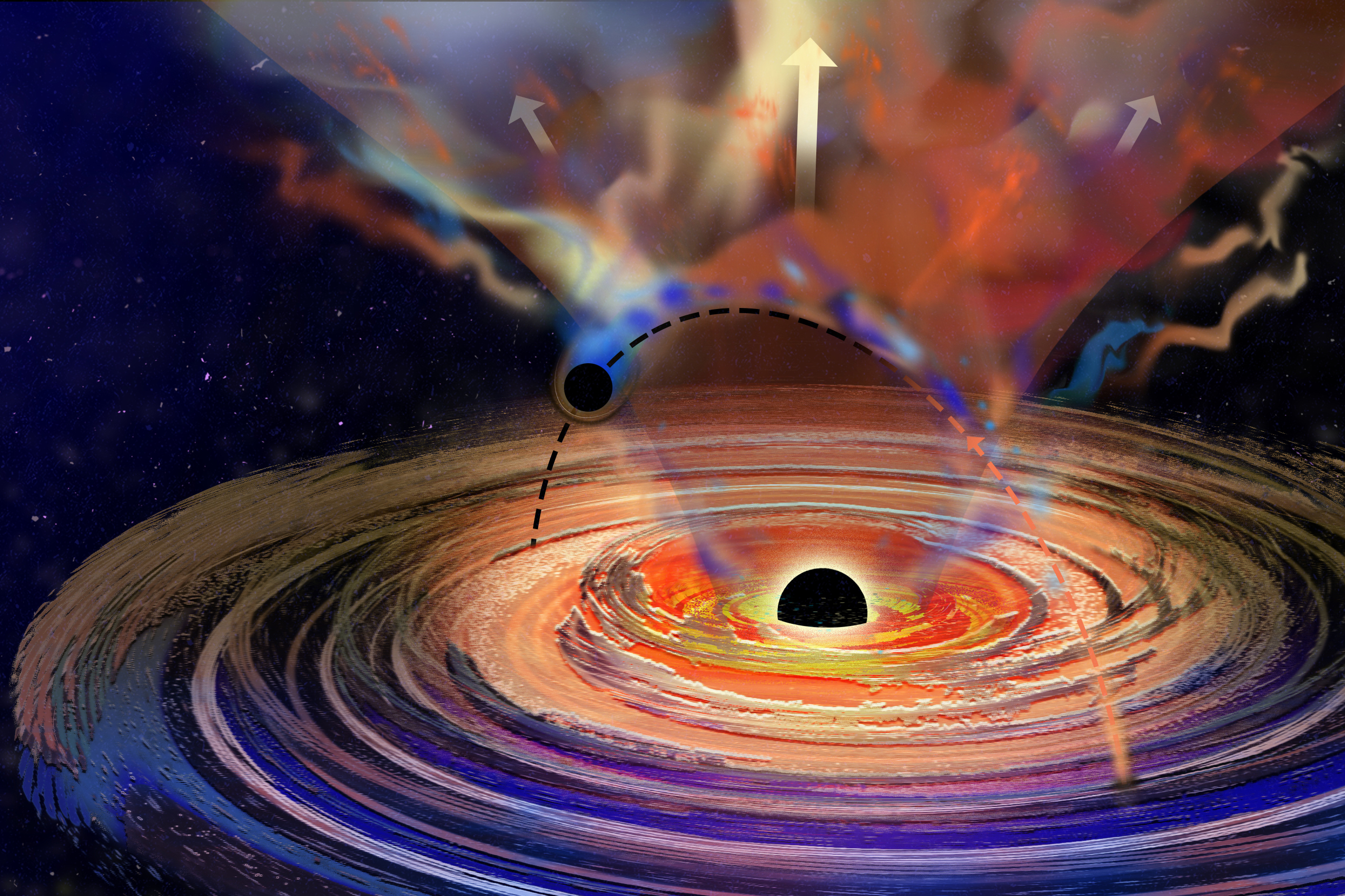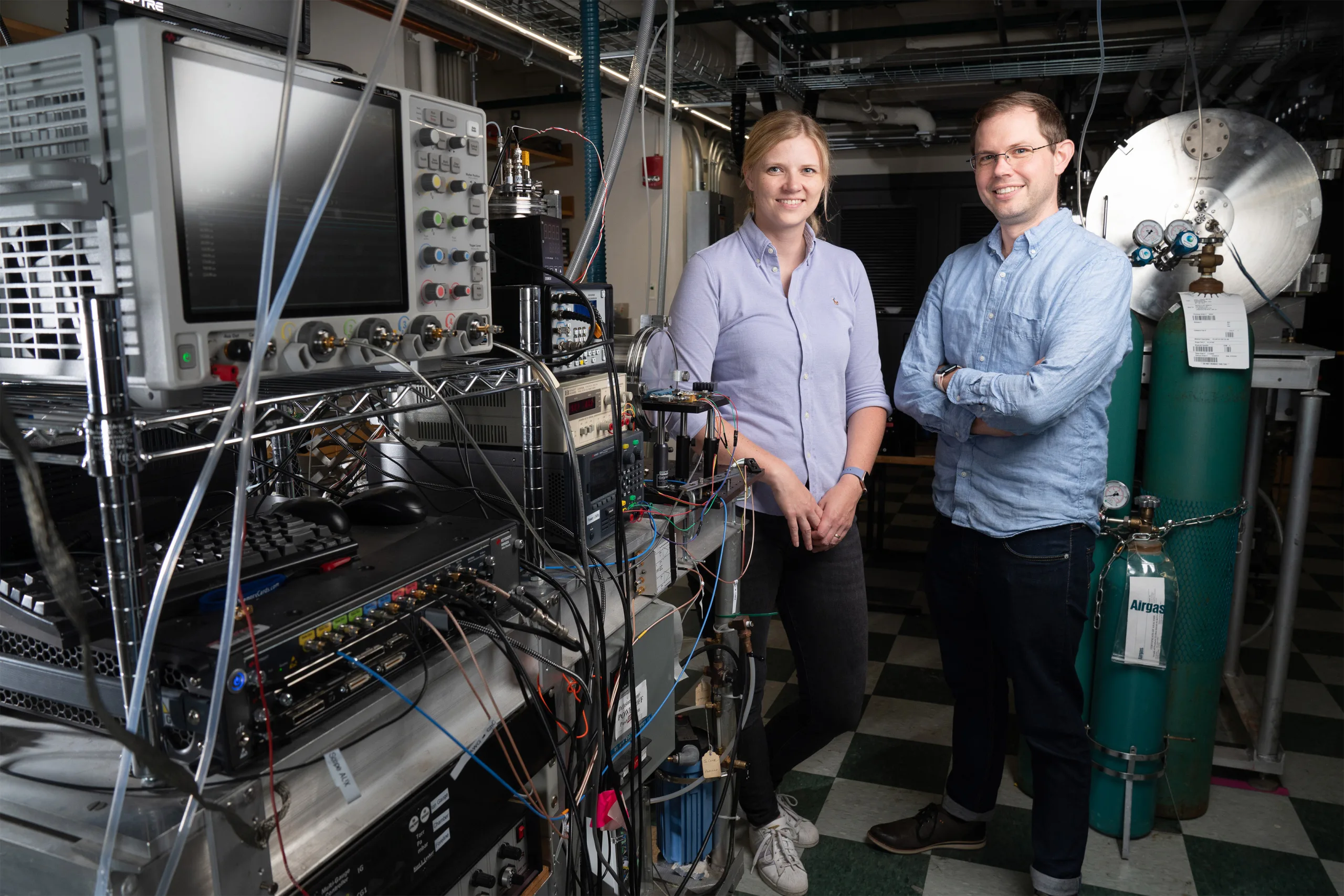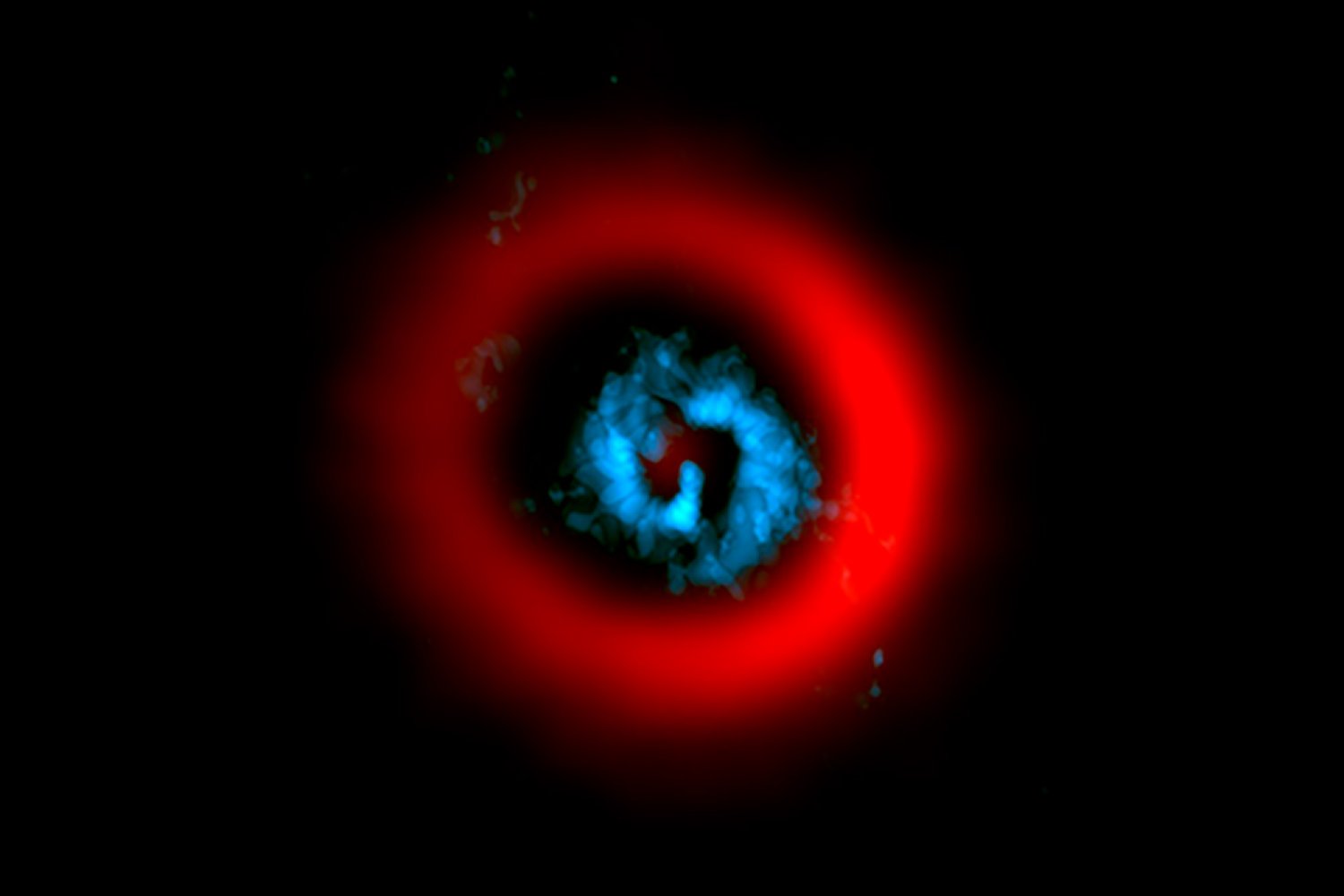Deep in a distant galaxy, a supermassive black hole seems to have developed a case of the hiccups!
A collaborative team of astronomers from MIT, Italy, the Czech Republic, and several other institutions has observed a previously quiescent black hole located about 800 million light-years away, which has recently begun to release plumes of gas every 8.5 days before returning to its quieter state.
This periodic behavior marks a groundbreaking discovery, as astronomers had never recorded such activity in black holes before. Researchers believe that the root cause of these outbursts is likely a smaller black hole orbiting the supermassive black hole, effectively flinging material out from the larger black hole’s gas disk every 8.5 days.
The findings, published in the journal Science Advances, challenge the traditional understanding of black hole accretion disks, which were thought to be relatively uniform structures. The research suggests that these disks may be more dynamic, potentially hosting other black holes and even entire stars within them.
Credit: Petra Sukova, Astronomical Institute of the CAS
“This research highlights that our understanding of black holes has room for expansion. There are likely many more systems like this waiting to be discovered,” says Dheeraj “DJ” Pasham, a research scientist at MIT’s Kavli Institute for Astrophysics and Space Research.
The study involves co-authors from MIT, including postdoc Peter Kosec, graduate student Megan Masterson, Associate Professor Erin Kara, Principal Research Scientist Ronald Remillard, and former research scientist Michael Fausnaugh, alongside partners from institutions such as Tor Vergata University of Rome and the Czech Academy of Sciences.
“Use it or lose it”
The team stumbled upon these findings through ASAS-SN (the All Sky Automated Survey for SuperNovae), a network of 20 robotic telescopes that continuously monitor the entire night sky. In December 2020, the survey detected a sudden burst of light from a galaxy that had been unusually quiet, causing its brightness to increase by a staggering factor of 1,000.
Pasham noticed this detection and turned NASA’s NICER (Neutron star Interior Composition Explorer) telescope towards the galaxy. NICER, orbiting the International Space Station, constantly watches for X-ray activity from neutron stars, black holes, and other extreme cosmic events. Fortunately, Pasham was nearing the end of his year-long observing period, making this opportunity particularly timely.
“It was either use it or lose it, and thankfully, it turned out to be my lucky break,” he recalls.
Pasham focused NICER on the galaxy as it continued to flare. The explosive outburst lasted for about four months, during which NICER captured daily measurements of the galaxy’s X-ray emissions. Upon examining the data closely, Pasham identified a peculiar pattern: subtle dips in a specific range of X-rays occurred regularly every 8.5 days.
This pattern suggested a periodic interruption in the galaxy’s energy output. Just like a planet crossing in front of a star temporarily blocks its light, these periodic dips indicated a blockage in the energy emitted from the black hole system. However, something as massive as an entire star could not simply obscure a galaxy’s light.
“I was puzzled over the meaning of this pattern because it wasn’t consistent with our current knowledge,” Pasham explains.
Punch it
While seeking answers, Pasham came across recent research from theorists in the Czech Republic, who proposed a fascinating possibility: a smaller black hole could orbit a supermassive one. This smaller black hole might intersect with the larger one’s accretion disk at an angle, creating a scenario where it could periodically “punch through” the disk.
According to the theory, each orbital pass of the smaller black hole would generate a gas plume, akin to how a bee disrupts pollen clouds. Strong magnetic fields around the supermassive black hole would then catapult these plumes upward and outward. If aligned just right towards observing telescopes, these plumes could appear as periodic dips in the overall brightness of the galaxy.
“I was thrilled by this theory, and I immediately reached out to the researchers,” Pasham shares.
Pasham collaborated with the theorists to run simulations based on NICER’s observations and the frequency of the 8.5-day dips. They concluded that the observed flares indeed suggest the presence of a secondary, smaller black hole orbiting the supermassive black hole, occasionally puncturing its disk.
Notably, before the December 2020 detection, the galaxy displayed minimal activity. Estimates suggest its central supermassive black hole weighs around 50 million solar masses. Leading up to the outburst, the black hole likely had a faint, diffuse accretion disk, with the smaller black hole—between 100 and 10,000 solar masses—orbiting unnoticed.
The researchers hypothesize that a nearby star ventured too close to the system during December 2020, resulting in a tidal disruption event that tore the star apart due to the supermassive black hole’s overwhelming gravity. The resulting influx of stellar debris brightened the black hole’s accretion disk, allowing it to consume this material over four months. During that time, the orbiting black hole generated a larger-than-usual gas plume, which pointed directly toward NICER.
Through numerous simulations, the team confirmed that the most plausible scenario is one involving an intermediate-mass black hole racing around a supermassive one.
“What we’re observing defies the conventional understanding of black holes,” Pasham concludes. “The evidence suggests interactions are occurring within the disk, which challenges the simplistic view of a gaseous disk surrounding black holes. We anticipate there’s a vast array of these systems in the universe.”
“This research serves as a brilliant example of leveraging disrupted star debris to shed light on the otherwise dark regions in galactic centers. It’s comparable to using fluorescent dye to identify leaks in pipes,” remarks Richard Saxton, an X-ray astronomer from the European Space Astronomy Centre (ESAC) in Madrid, who was not part of the study. “The results indicate that supermassive black hole binaries may be common within galactic nuclei, holding significant promise for future gravitational wave research.”
This groundbreaking research received support in part from NASA.
Photo credit & article inspired by: Massachusetts Institute of Technology



